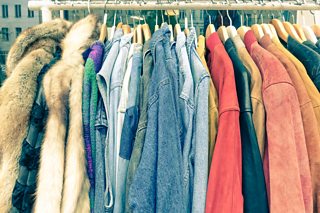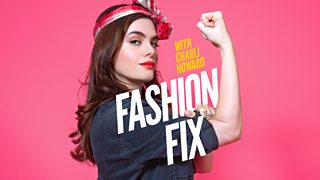Vintage, thrift and deadstock: why buy old clothes?
Some things never go out of style, but fortunately even the things that do can come back into fashion eventually. The market for vintage clothing relies on that fact, with the fashion industry regularly picking up on past trends from any and every era and making old clothes cool again.
Buying used clothing can save you a packet but there are even more good reasons to shop second hand, as model and activist Charli Howard discovered when she investigated vintage shopping for her 大象传媒 Sounds podcast Fashion Fix.

Is second-hand shopping sustainable?
With fast fashion dominating the marketplace, charity shopping can actively reduce waste. According to the textile charity , in 2017 UK charity shops diverted over 330,000 tonnes of textiles from landfill. This helped reduce carbon emissions by reusing and recycling second-hand clothes.
How can you find something no-one else has?
Charli met with Bella McFadden, aka Internet Girl, who has made a career out of finding items in dusty vintage shops and reselling them online. Bella is a businesswoman and a stylist whose bespoke vintage clothing bundles have their own unboxing hashtag on YouTube.
And Bella had some tips for those looking to unearth that perfect piece. She advises going to the stores no one else visits and spending as much time in them as you can. “Go through every single item on the racks,” she says. “Usually I’ll find my most rare pieces in the most unexpected places.”
But what is the difference between vintage and thrift?
“I would say thrifting is when you’re like actually going out and hunting the items while buying vintage is more going to a boutique and buying from a curated collection,” explained Bella. “But you could acquire things when thrifting that obviously is from a different era, which is the classical definition of vintage.”

And what is 'deadstock'?
Deadstock is slightly different – it is clothes that were never bought in the first place. It’s not second hand, but it’s not new either. “Deadstock is ‘new’ old stock from another era,” as Bella puts it. “It’s like when it’s brand new, from another decade. Whenever I unearth some deadstock I freak out!”
Bella isn’t the only high profile fan of deadstock. When they’re not making music with teenage climate activist Greta Thunberg, British band The 1975 are now giving used and deadstock T-shirts a make-over, instead of creating new tour merchandise.
Are there problems with vintage clothing?
It’s not all good news. The estimates that only about 30% of the clothes we donate to charity get sold in the UK. The rest are exported to other countries, which some say is having a negative impact on their garment industries by putting local makers out of business.
However, buying vintage means you’re not using up more resources and creating more pollution to make something new, so most would argue that the positives outweigh the negatives!
Listen on 大象传媒 Sounds...
-
![]()
Body Positivity with Sonny Turner
Charli sets off on her mission to fix fashion with a look at body image.
-
![]()
Sustainable Streetwear with Emmanuel Enemokwu
Charli discovers a new breed of sustainable brands.
-
![]()
Modest Fashion with Mariah Idrissi
Charli meets the model who made modest fashion mainstream.
-
![]()
Subscribe to Fashion Fix with Charli Howard
Get the latest from Fashion Fix on 大象传媒 Sounds.




